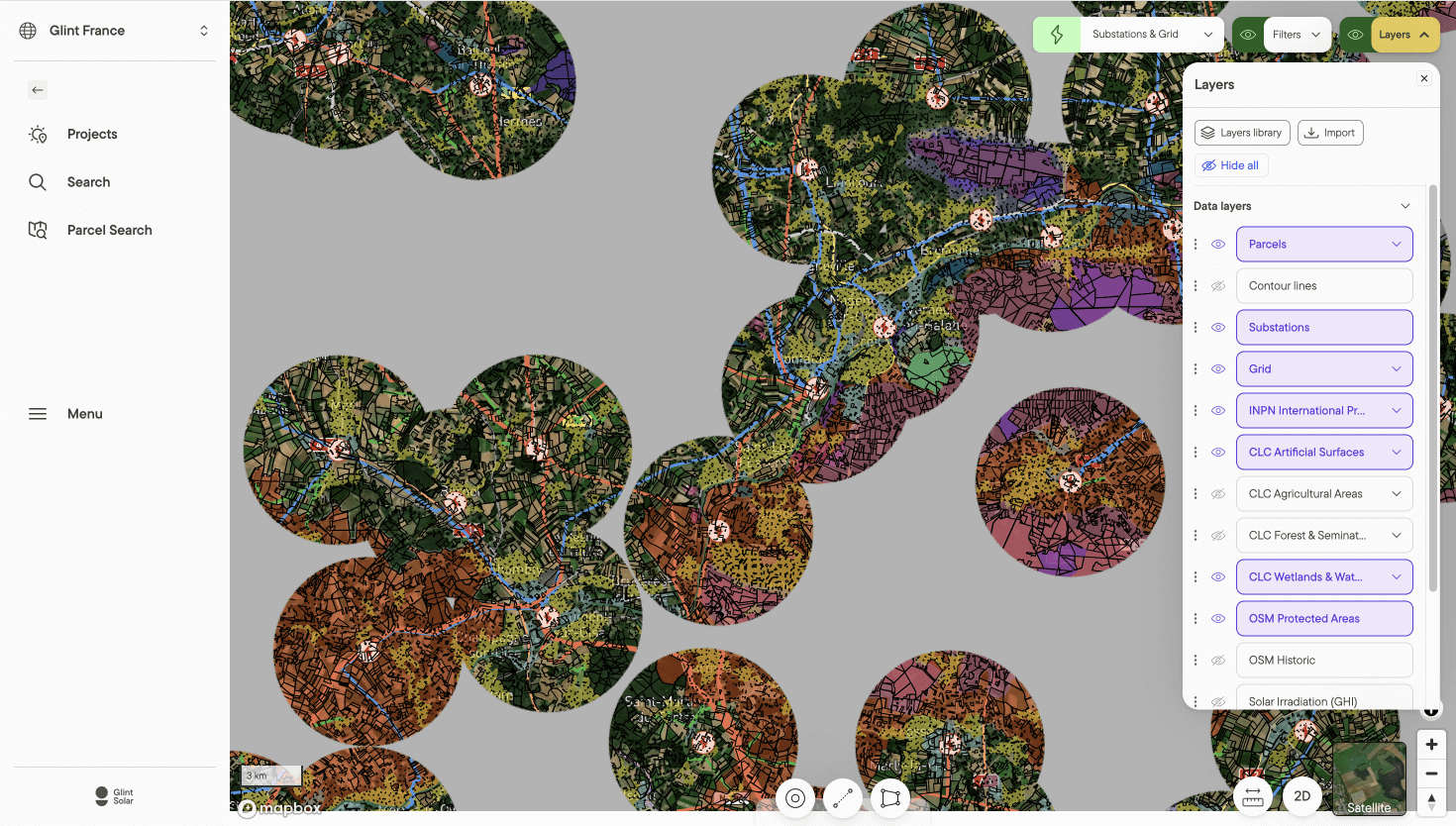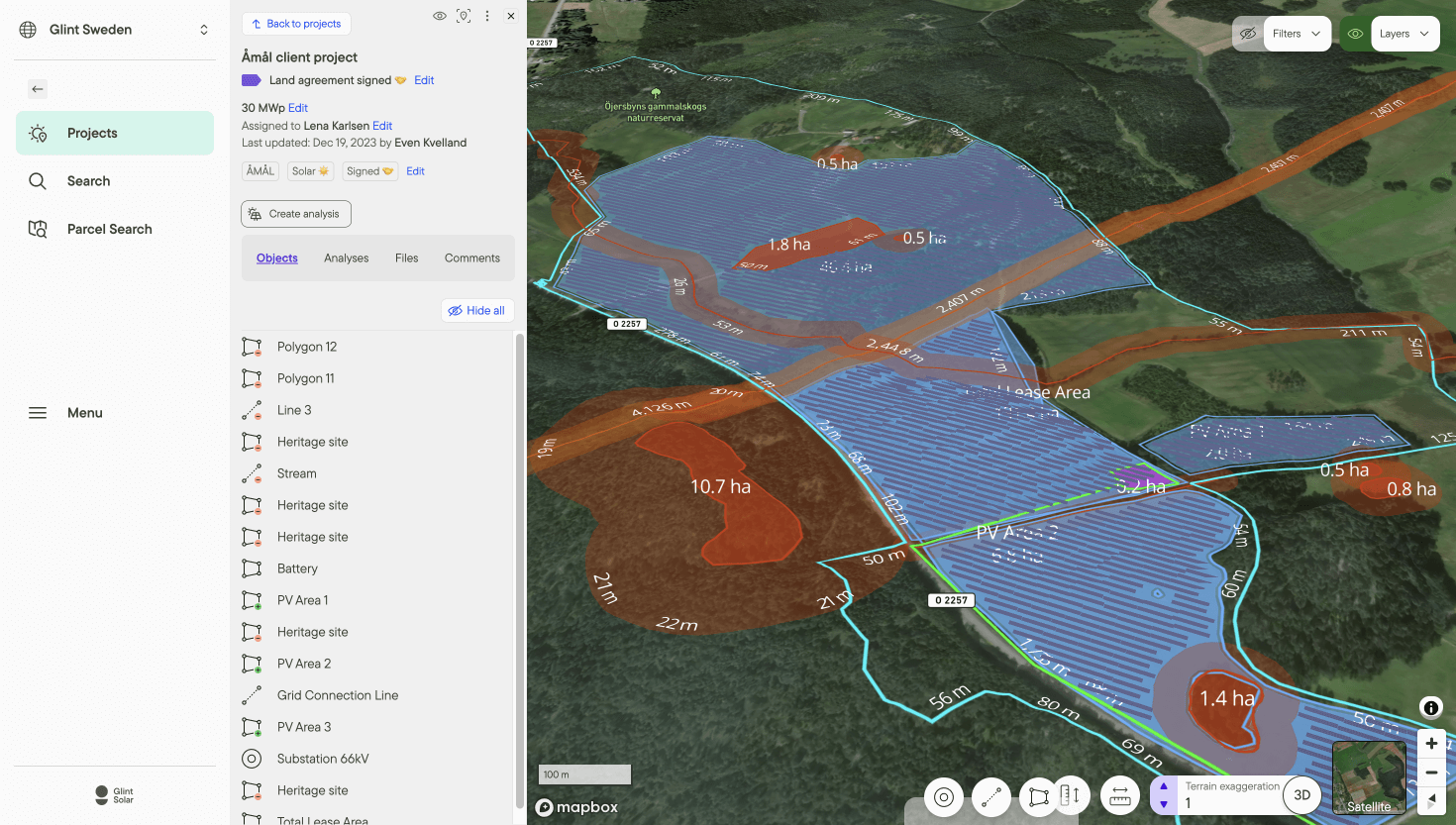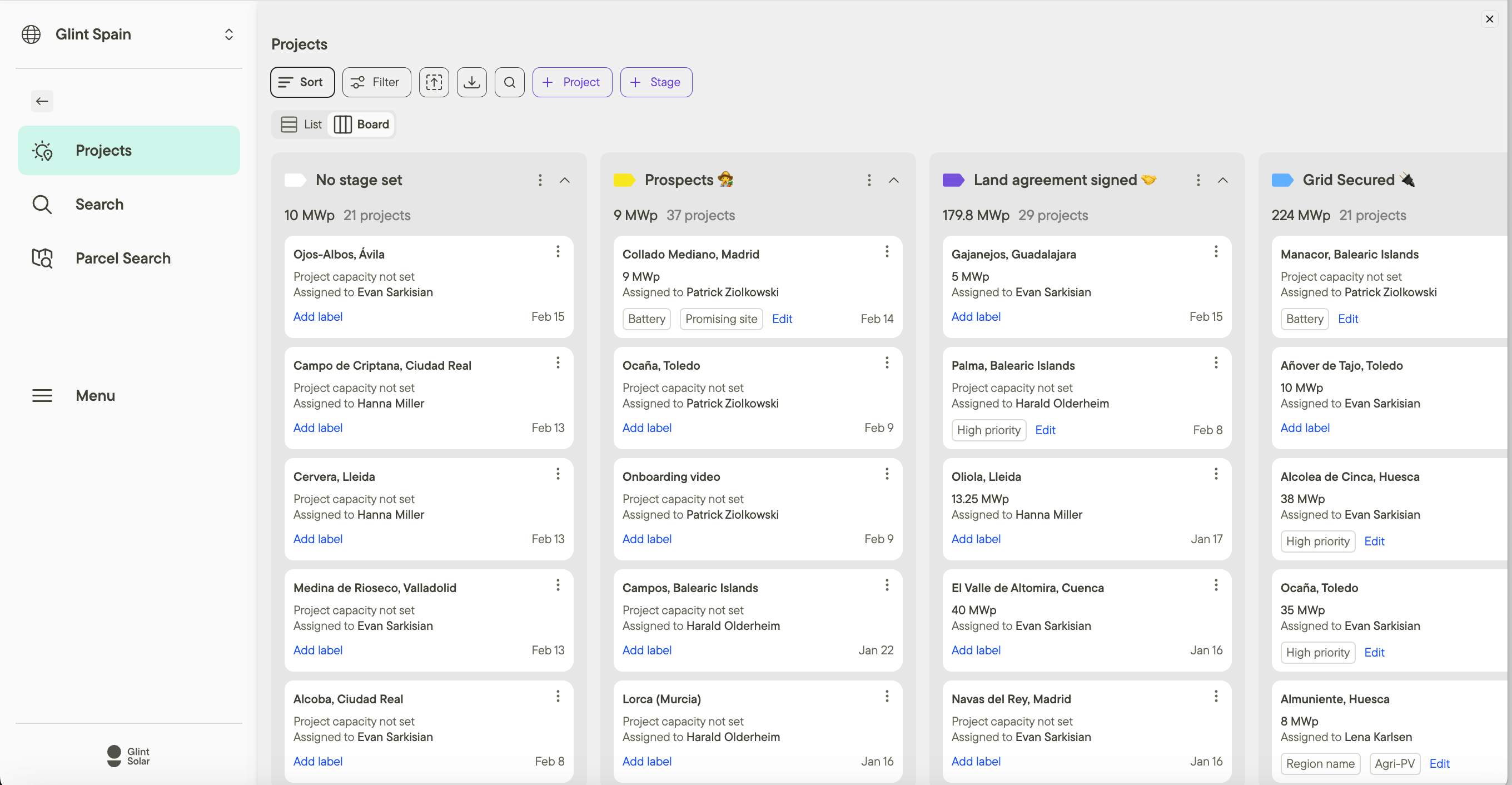Identify top solar sites. Design and collaborate.
A single hub to triple your greenfield project pipeline growth with unmatched ease. Tailor-made for utility-scale solar developers.

TRUSTED BY






Why Glint Solar
In the dynamic solar industry, success hinges on access to early insights and rapid decisions. With 73% of development hours often wasted on stalled projects, Glint Solar redefines initial project stages to ensure your triumph with swift, reliable outcomes. Choose Glint Solar to:
How it works
Prospect or evaluate sites 10X faster
A comprehensive and repeatable site selection process in minimal time:
- Swiftly analyze thousands of sites
- Identify relevant opportunities and avoid red flags
- Blend GIS data with topographical analysis for an accurate evaluation of buildable areas


Pre-design and analyze sites in a snap
Bid farewell to tedious, half-day tasks. Craft engineering-approved designs and reports within minutes, regardless of your technical background:
- Assess preliminary yield and project feasibility in a few clicks
- Mark exclusion zones, roads, grid connections, and more
- Quickly generate 3D project visualizations with elevation profiling
- Make updates, assess multiple layout scenarios, and adapt to feedback instantly
Boost collaboration and streamline project workflows
A collaboration hub to elevate your solar project management game:
- Gain full control over your projects and access all the data you need
- Keep track of your pipeline progress and identify blockers
- Easily transfer information between business development, GIS, and engineering

Don’t just take our word for it

“The ability to have GIS data and preliminary design in the same software has been a game changer for us. It allows us to build our pipeline quickly by having the necessary insights right from the start.”
Michael
Head of Solar Germany, ILOS Projects GmbH

“My team used this tool to increase our greenfield pipeline by almost 80 MW in one month.”
Eric
Solar Site Developer, Alight

“If we continue to prospect at this rate, the number of potential projects would be unmanageable!”
David Rodriguez
Investment Analyst, Quintas Cleantech
Maximize your team potential with Glint Solar
Not just a tool; a cohesive force that unites your entire solar development team
.png?width=500&height=405&name=LINEWORK%20(1).png)
For Business and Project Development teams
Evaluate inbound leads, prospect efficiently across multiple markets, analyze buildable areas, and conduct preliminary project design, all in one software.
For Engineering teams
Receive higher quality projects from business development with minimal costly iterations. Conduct quicker preliminary designs yourself or set up engineering-approved designs for business development colleagues.
For GIS teams
Bid farewell to siloed work in generic GIS tools that don't speak Solar Energy. Say yes to a collaborative hub that centralizes your data and simplifies the management of critical layers to better integrate your existing workflow.
For Executive and Management teams
Gain a bird's-eye view of the entire project portfolio across markets, ensuring consistent workflows to execute your company's pipeline growth target.
.png?width=1080&height=1080&name=Nordic%20grid%20system%20homepage%20(1).png)
%20(1).png?width=1080&height=1080&name=pvmagazine%20and%20Glint%20Solar%20webinar%20thumbnail%20(2)%20(1).png)
%20(1).png?width=1080&height=1080&name=solar%20vocabulary%20guide%20(3)%20(1).png)
.png?width=1080&height=1080&name=solar%20project%20collaboration%20(1).png)



